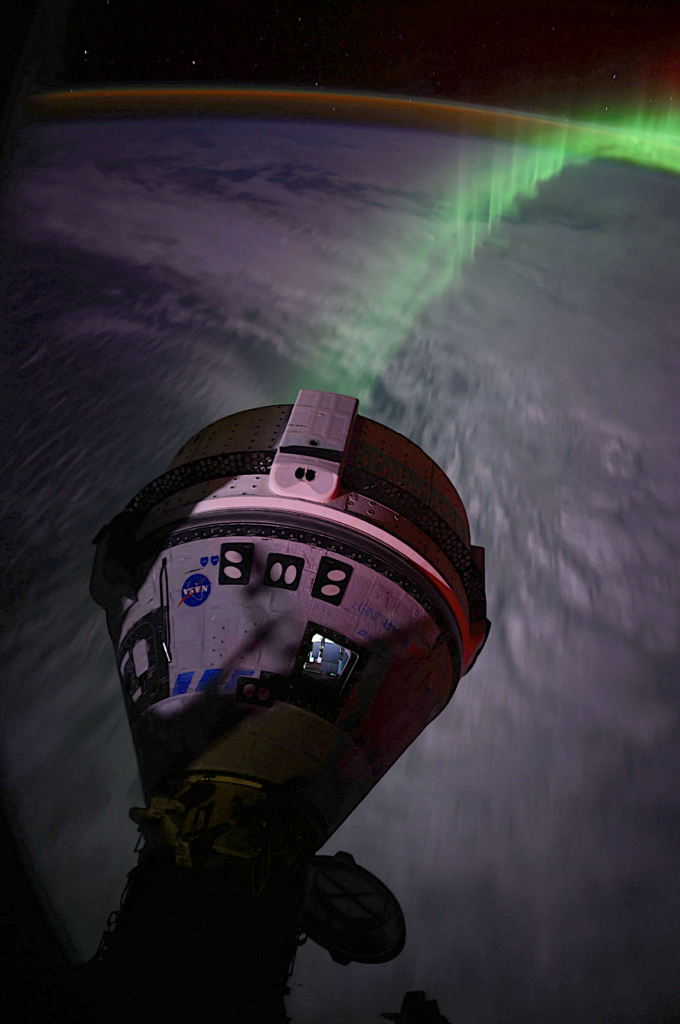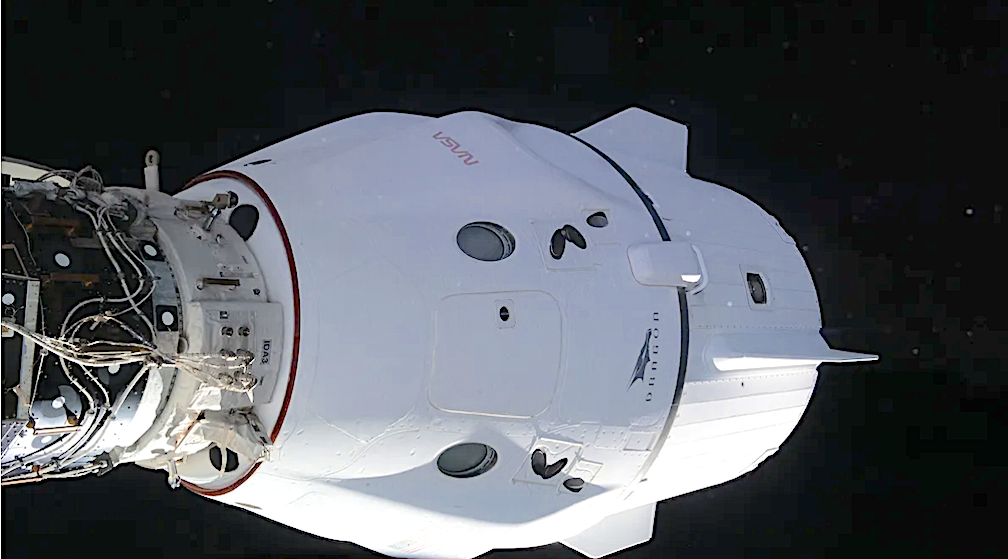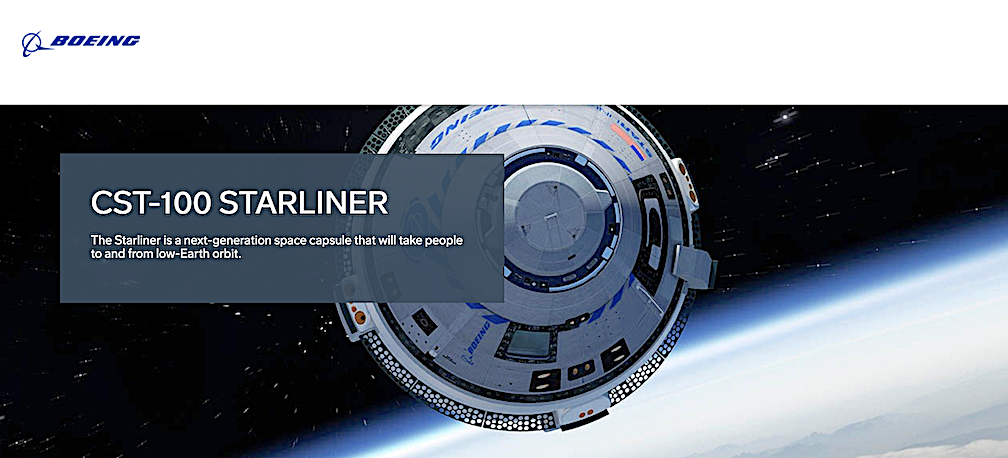
Photo credit: NASA/Matt Dominick
See NASA’s statement in second article below
The first astronaut mission of Boeing’s Starliner capsule has been extended again, with the spacecraft set to remain docked with the International Space Station (ISS) until at least July 2. This marks the third time the mission has been delayed, with the initial return date of June 18 pushed back to June 22 and then to June 26.
The extra time will allow Boeing and NASA to assess several issues that have arisen with the vehicle, including small helium leaks in its propulsion system and problems with its reaction control system (RCS) thrusters.
Despite the delays, NASA still has confidence in Starliner, with Steve Stich, manager of NASA’s Commercial Crew Program, stating that the spacecraft is “performing well in orbit while docked to the space station.”
However, the repeated extensions are a cause for concern, with many experts questioning Boeing’s ability to manage complex space missions and ensure the safety of astronauts. The issues with Starliner are not new, with the spacecraft experiencing problems during its rendezvous and docking with the ISS. Five of its 28 RCS thrusters malfunctioned, although four were eventually brought back online. Additionally, five small helium leaks were detected in the propulsion system, with one spotted before launch and the others cropping up after deployment.
The delays have raised questions about Boeing’s readiness for complex space missions and its ability to ensure astronaut safety. The company has faced numerous challenges this year, including whistleblower scandals, aircraft safety issues, and now the perilous situation with Starliner. The project was seen as a chance for redemption, but it has failed to meet expectations.

In contrast, SpaceX has consistently demonstrated its reliability, launching its Falcon 9 rocket almost every week and completing over 200 successful missions. The company’s Crew Dragon spacecraft has been used for multiple crewed missions to the ISS and has earned a reputation as the safest spacecraft in the world. SpaceX’s reliability has made it a go-to option for companies facing significant issues, such as the Russian Soyuz spacecraft’s coolant leak in December 2022.

Boeing’s reluctance to seek help from SpaceX is seen as a significant humiliation, given the company’s long history in aerospace and its established reputation. Founded in 2002, SpaceX has rapidly gained traction due to its innovative approaches and successful missions. Both Boeing’s Starliner and SpaceX’s Dragon were developed under NASA’s Commercial Crew Program, with Boeing receiving a larger contract of $4.2 billion compared to SpaceX’s $2.6 billion. Despite this, Boeing’s Starliner has faced numerous delays and technical issues, while SpaceX’s Crew Dragon has been successfully used for multiple missions.
Many experts believe that NASA should reconsider its investment in Boeing’s Starliner and halt further funding for the program. Boeing has already incurred significant losses, with estimates of around $1.5 billion beyond the NASA contract. The Starliner project has also raised concerns about NASA’s decision-making process and its ability to oversee complex space missions. NASA’s investment in Boeing’s Starliner has been questioned, given the company’s history of delays and technical issues.
The space agency’s reluctance to cancel the project and seek alternative options has raised eyebrows, especially considering the safety risks associated with the Starliner spacecraft.
The above is credited to SpaceX Community
NASA, Boeing Adjust Timeline for Starliner Return
NASA and Boeing leadership are adjusting the return to Earth of the Starliner Crew Flight Test spacecraft with agency astronauts Butch Wilmore and Suni Williams from the International Space Station. The move off Wednesday, June 26, deconflicts Starliner’s undocking and landing from a series of planned International Space Station spacewalks while allowing mission teams time to review propulsion system data. Listen to a full replay of the June 18 media briefing where NASA and Boeing leadership discussed the ongoing efforts.
“We are taking our time and following our standard mission management team process,” said Steve Stich, manager of NASA’s Commercial Crew Program. “We are letting the data drive our decision making relative to managing the small helium system leaks and thruster performance we observed during rendezvous and docking. Additionally, given the duration of the mission, it is appropriate for us to complete an agency-level review, similar to what was done ahead of the NASA’s SpaceX Demo-2 return after two months on orbit, to document the agency’s formal acceptance on proceeding as planned.”

A media telecon with mission leadership will follow the readiness review’s conclusion, and the agency will share those details as they are solidified. Boeing’s Starliner spacecraft remains cleared for return in case of an emergency on the space station that required the crew to leave orbit and come back to Earth.
Mission managers are evaluating future return opportunities following the station’s two planned spacewalks on Monday, June 24, and Tuesday, July 2.
“Starliner is performing well in orbit while docked to the space station,” said Stich. “We are strategically using the extra time to clear a path for some critical station activities while completing readiness for Butch and Suni’s return on Starliner and gaining valuable insight into the system upgrades we will want to make for post-certification missions.”
Wilmore and Williams remain integrated with the Expedition 71 crew, assisting with station operations as needed and completing add-on in-flight objectives for NASA certification of Starliner.
“The crew’s feedback has been overwhelmingly positive, and they know that every bit of learning we do on the Crew Flight Test will improve and sharpen our experience for future crews,” said Mark Nappi, vice president and program manager, Boeing’s Starliner Program.
The crew is not pressed for time to leave the station since there are plenty of supplies in orbit, and the station’s schedule is relatively open through mid-August.
The above article is from NASA’s Blog
